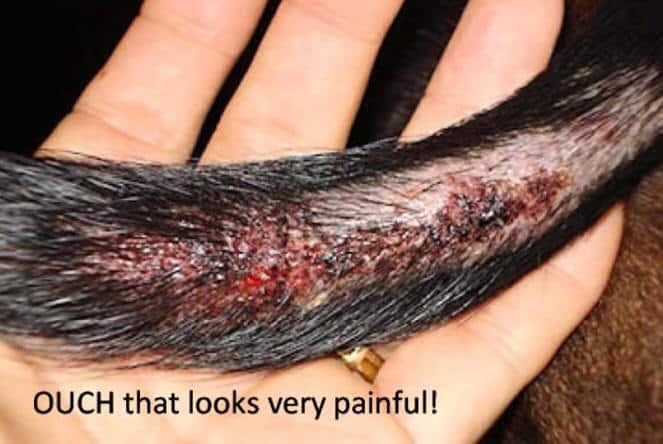Tail docking and ear cropping are practices steeped in tradition yet marred by controversy. Historically, these procedures were believed to prevent rabies, strengthen the back, and increase the animal’s speed. Today, they often straddle the line between functional necessity and aesthetic preference, sparking a debate that touches on animal welfare, ethics, and the very nature of human-animal relationships. This article takes a closer look at the multifaceted debate surrounding tail docking and ear cropping, examining their historical roots, medical rationale, legal and ethical implications, and cultural influences to offer a comprehensive understanding of why they remain prevalent and contentious in modern society.
Contents
Historical Context

Tail docking and ear cropping have origins that trace back centuries, initially rooted in practicality rather than aesthetics. Dogs bred for hunting, herding, or ratting were often subjected to these procedures to prevent injuries that could arise during their work. This utilitarian approach underscored the belief that such practices were essential for the animal’s health and efficiency, embedding them deeply within the fabric of many cultures’ approach to animal rearing and care.
Over time, as societies evolved and the roles of dogs shifted from working animals to companions, the justification for tail docking and ear cropping began to wane. However, the inertia of tradition has kept these practices alive, transitioning their purpose from functional necessity to conforming with breed standards set by kennel clubs. This shift reflects a broader cultural transformation in the relationship between humans and animals, yet it also highlights the enduring impact of historical practices on contemporary animal care.
Medical and Behavioral Reasons

Veterinarians and breed enthusiasts often cite medical and behavioral reasons to justify tail docking and ear cropping. Proponents argue that these procedures can prevent future health issues, such as infections in droopy ears or injuries to long tails. This perspective suggests that, in some cases, the benefits of these procedures outweigh the risks, positioning them as preventive measures rather than cosmetic alterations.
However, the counterargument emphasizes the risks associated with these surgeries, including pain, infection, and potential behavioral changes due to trauma. Critics argue that the supposed medical benefits are minimal or non-existent, pointing to studies that question the efficacy of these practices in preventing health issues. The debate over medical justification reflects a broader discussion on the ethics of subjecting animals to potentially unnecessary procedures for perceived benefits.
Legal and Ethical Considerations

The legal landscape regarding tail docking and ear cropping varies significantly across the globe, reflecting diverse ethical standards and cultural values. In many European countries, these practices are banned or heavily regulated, recognizing them as unnecessary and cruel. These legal restrictions are often grounded in a growing ethical consensus that prioritizes animal welfare and questions the morality of altering an animal’s appearance for aesthetic reasons.
On the other hand, in countries where these practices remain legal, the debate is fueled by differing views on animal rights, owner autonomy, and cultural traditions. Ethical considerations hinge on the balance between respecting historical practices and acknowledging evolving standards of animal treatment. This dichotomy presents a complex legal and moral challenge as societies grapple with reconciling respect for tradition with the imperative to ensure animal welfare.
Cultural and Societal Influences

Cultural preferences play a significant role in the persistence of tail docking and ear cropping. In some circles, these procedures are seen as integral to a breed’s identity, contributing to a dog’s regal or fierce appearance, which can be highly valued. This aesthetic appeal, deeply rooted in certain cultural histories and traditions, often drives demand for breeds conforming to these modified standards, underscoring the influence of cultural aesthetics on animal treatment.
Conversely, there is a growing societal shift towards valuing natural animal appearances, spurred by increased awareness of animal welfare issues and the promotion of ethical treatment standards. This shift is evident in the rising criticism of tail docking and ear cropping in social media and public discourse, reflecting a broader change in how society views the relationship between humans and animals. As cultural norms evolve, so too does the debate around these practices, highlighting the tension between tradition and progressive animal welfare standards.
Psychological Impact on Animals

The psychological impact of tail docking and ear cropping on animals is a critical aspect of the debate, with growing evidence suggesting these procedures can cause significant stress and anxiety. Studies have shown that puppies undergoing these surgeries experience pain and discomfort, which can lead to long-term behavioral changes. These findings raise questions about the emotional well-being of animals subjected to such alterations, challenging the notion that these practices are benign or beneficial from the animal’s perspective.
Moreover, the removal of a dog’s primary means of communication—its tail—can hinder social interactions with other dogs and humans. Tail movements convey important signals regarding a dog’s emotional state and intentions. By docking a tail, you may be impairing an animal’s ability to communicate effectively, potentially leading to misunderstandings and conflicts. This consideration adds another layer to the ethical debate, emphasizing the need to weigh the aesthetic desires of humans against the natural behaviors and emotional health of animals.
Alternatives and Advances in Animal Welfare

As awareness of the potential harms of tail docking and ear cropping grows, so too does the exploration of alternatives that prioritize animal welfare. Advances in veterinary medicine and animal care are providing options that maintain the health and functionality of dogs without resorting to invasive procedures. For example, selective breeding practices can emphasize the natural traits of breeds without altering their physical appearance, aligning breed standards with welfare considerations.
Additionally, there is a push within the veterinary and animal welfare communities to educate pet owners and breeders about the importance of natural growth and development. By fostering a culture that values the inherent beauty and health of animals as they are, you can help reduce the demand for cosmetic alterations. This shift not only benefits the animals involved but also reflects a broader commitment to ethical treatment and respect for all living beings, marking progress in the journey towards more humane animal welfare standards.
Public Opinion and Trends

Public opinion on tail docking and ear cropping is evolving, influenced by a growing awareness of animal welfare issues and the spread of information through digital media. Social media platforms, in particular, have played a pivotal role in highlighting the realities of these practices, often sparking widespread public debate. This increased visibility has contributed to a shift in perceptions, with more people advocating for natural, unaltered appearances in pets. The trend is indicative of a broader societal move towards valuing authenticity and ethical treatment over aesthetic preferences imposed by humans.
This change in public sentiment is also reflected in the decreasing popularity of breeds known for being traditionally docked or cropped in favor of breeds that are left in their natural state. Animal welfare organizations and advocacy groups are harnessing this momentum, pushing for legislative changes that protect animals from unnecessary alterations. As these trends continue to gain strength, they signal a potential turning point in how societies value and protect the rights and well-being of animals, pointing towards a future where cosmetic modifications may become a thing of the past.
Join the Movement Against Cosmetic Cruelty
As the debate on tail docking and ear cropping unfolds, it’s clear these practices touch on deeper issues of animal welfare and ethics. This discussion invites you to reconsider your views on tradition, aesthetics, and the treatment of animals under human care. By advocating for laws that protect animals from unnecessary alterations and supporting ethical breeding practices, you can contribute to a more humane world. Let’s commit to being informed, compassionate pet owners and animal advocates, making choices that prioritize the well-being of your furry companions.


